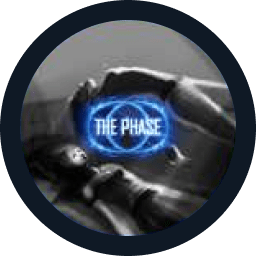There are numerous techniques for lucid dreaming used to enter the phase. There are so many, in fact, that counting them is pointless. Practitioners often develop their own methods, drawing from previous out-of-body experiences. This site presents all the main types of lucid dreaming techniques, as well as some that I have developed myself. These unique methods can be useful even for experienced practitioners. My personal characteristics and lifestyle may have influenced the effectiveness of certain techniques for you, possibly even improving the results.
Lucid Dreaming Methods
Among all the existing techniques for lucid dreaming, three key approaches can be distinguished: the direct method, the indirect method, and becoming conscious while dreaming. I have not met anyone who uses only one of these methods. People usually master the indirect method and the method through sleep, as they are the simplest and require less time and emotional effort than the direct method. However, to fully master the phase, one should strive to learn all three methods. I began writing this book only after mastering the most difficult of them—the direct method—with which I had the greatest difficulties.
There are more extreme methods, such as using narcotics, but I will not consider them for two reasons: first, everything described in this book is based on my experience using only the power of the mind and will; second, to achieve a lucid dream, it is necessary to use safe methods to avoid the risk of addiction and other dangerous side effects.
Direct Technique
Direct entry into a lucid dream is considered the most important among all lucid dreaming techniques. It involves entering the phase without transitioning through sleep and must be done no more than five to ten minutes after waking up; sleep should not affect the subsequent immersion into the phase. This method has two key advantages: it allows reaching the phase at any time of the day when necessary, and it is the most convincing for outside observers, who might mistakenly consider other methods as just sleep. This method is often mentioned by psychics, but only a few can master it well enough not to recall other methods. Among all autonomous methods of entering the phase, this one is second only to the following method.
Indirect Technique
By “indirect entry into the phase,” we mean entering a lucid dream within five minutes of awakening. It does not matter whether you slept for just one minute or the whole night. This method often occurs spontaneously, and it is effective because, after sleeping, the body is in a state of deep relaxation and has just been in a state close to the phase, which contributes to a successful out-of-body experience.
Through-Sleep Technique
Different lucid dreaming techniques also include entering the phase through sleep, which involves becoming aware of your state within the dream and then deepening this state to enhance your perception of it. This is one of the most unpredictable and difficult-to-control techniques, as becoming aware within a dream happens randomly and does not always depend on your conscious effort. Although this method may seem boring and mundane to beginners, it actually has unique features and advantages.
The difference between the three types of lucid dreaming techniques for entering the phase is ultimately insignificant. The main distinction is that when entering through sleep, there is a higher probability that you will fall asleep again, but all methods lead to achieving a lucid dream. Therefore, it is important to choose the technique that is most convenient for you and suits your lifestyle.
At the beginning of my journey, I often entered the phase after sleep or through sleep. It wasn’t until I began to practice actively that I focused on the direct method. Despite difficulties with direct entry, I managed to master other techniques. Over time, the number of phases I achieved through the indirect method increased as I paid more attention to it. Although the number of phases I achieved through sleep remained stable, the proportion of these phases in all the phases I achieved decreased, and the proportion achieved through direct entries increased. For me, the indirect method remains the main one, as it allows me to achieve numerous “out-of-body” experiences thanks to the possibility of frequent awakenings.
In essence, the role of sleep in the indirect method lies in its relaxing effect. This distinguishes it from the direct method, which requires the use of complex relaxation techniques. If you use the indirect method, you do not need to worry about relaxation—just fall asleep, and your body will perform this function on its own. In this sense, one could say that an indirect entry into a lucid dream is not entirely different from a direct entry; the only difference is that sleep is used for relaxation.
Psychological and Physical Factors
Entering the phase by becoming aware within the dream does not require significant physical effort. The main focus here is on creating intention and secondary attention. However, many people face difficulties because this method requires deep inner effort.
However, these difficulties do not compare to those experienced when attempting a direct entry into the phase. The direct method can cause significant frustration, especially when you spend a lot of time and effort on it without seeing noticeable results. I often encountered this myself, although not everyone experiences it so intensely. No method guarantees 100% success, and direct entry, despite its difficulties, does not always justify the efforts expended. In this sense, the indirect method may be more satisfying, as the probability of success is higher, and the level of frustration is lower.
Choosing a Technique That Works
Choosing the most suitable way to enter the phase largely depends on your physiology and lifestyle. Some people do not experience difficulties with either the direct or indirect methods and can easily reach the phase simply by relaxing in bed or a comfortable chair. These people often do not even realize what is happening and may experience fear or surprise when having such experiences.
On the other hand, some people face great difficulties. Regardless of how much time and effort they invest, the result may remain insignificant. However, everyone has the ability to become aware within a dream. If you encounter problems using the direct or indirect methods, it may be that your body finds it hard to relax without sleep, making the method through sleep more suitable.
Personally, I don’t find it particularly easy or difficult to enter the phase. In my case, it depends on my lifestyle. For example, intensive training requires more rest and sleep, which can help in achieving the phase. However, muscle development also complicates relaxation, as large muscles can hinder this process.
Other aspects of life, such as psychological issues, also play a role. Additionally, bad habits like smoking, alcoholism, and drug use have a negative impact on the ability to achieve lucid dreams and can lead to serious illnesses.
Furthermore, regular practice is crucial. Intermittent engagement with lucid dreams can lead to problems with entering the phase. In my own experience, I have found that consistently practicing different lucid dreaming techniques is necessary to achieve results. Even if one technique is effective at a certain stage, it does not mean it will always be effective. Therefore, it is important to not stick to one method and to regularly try new techniques for lucid dreaming.









